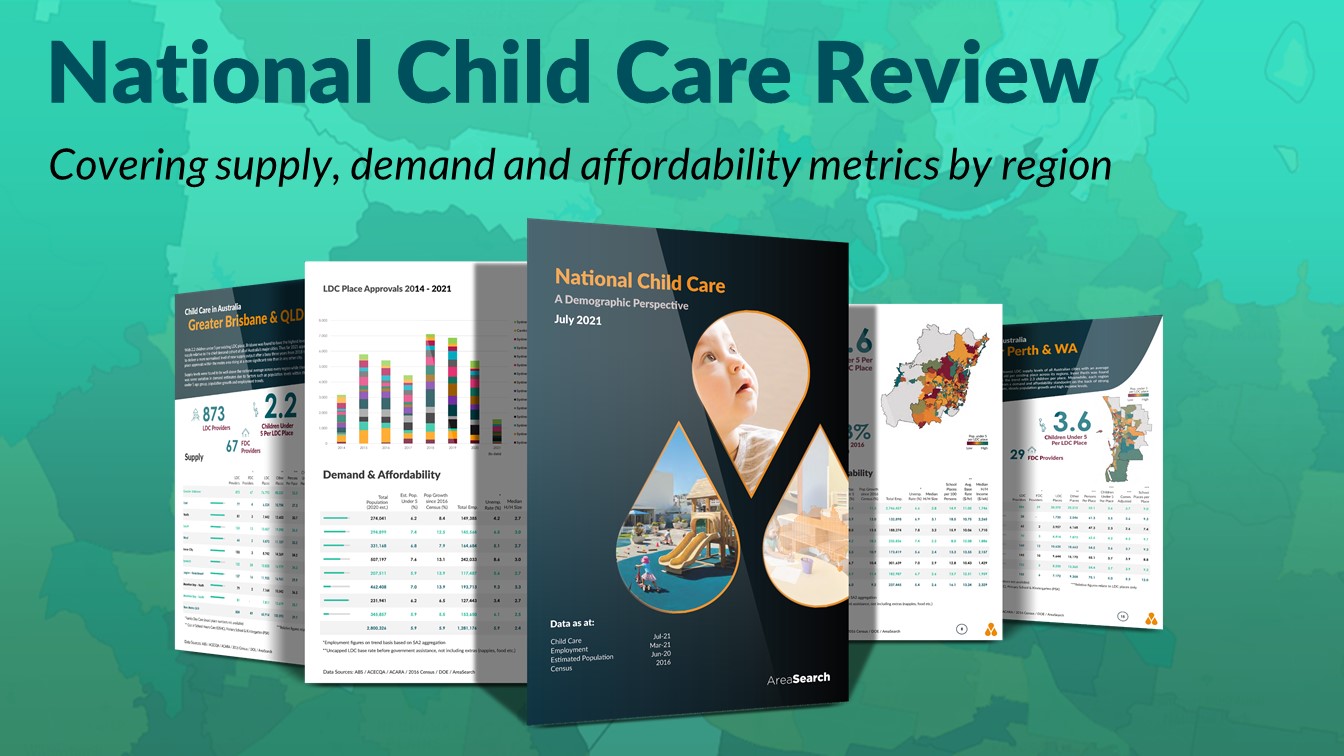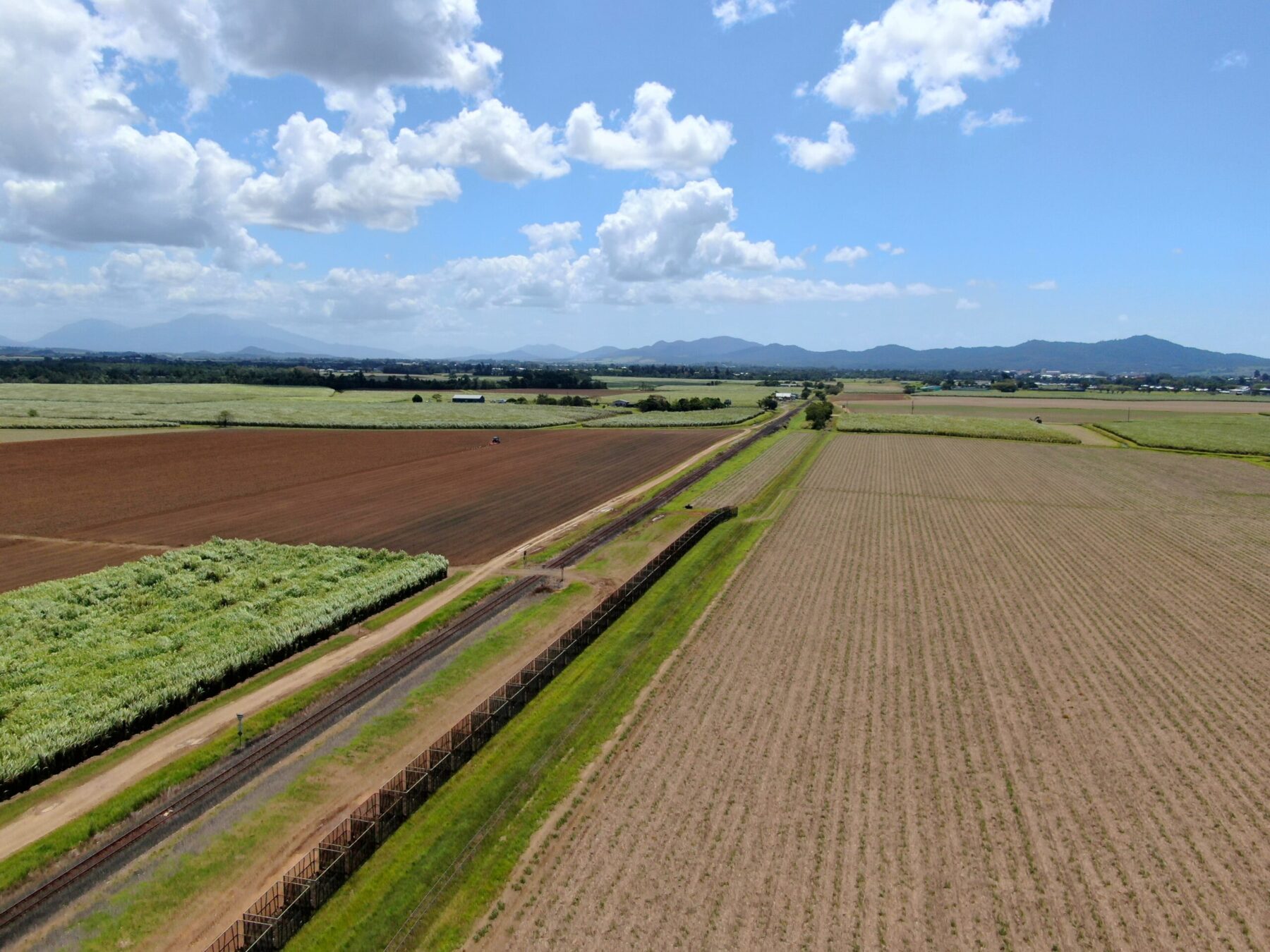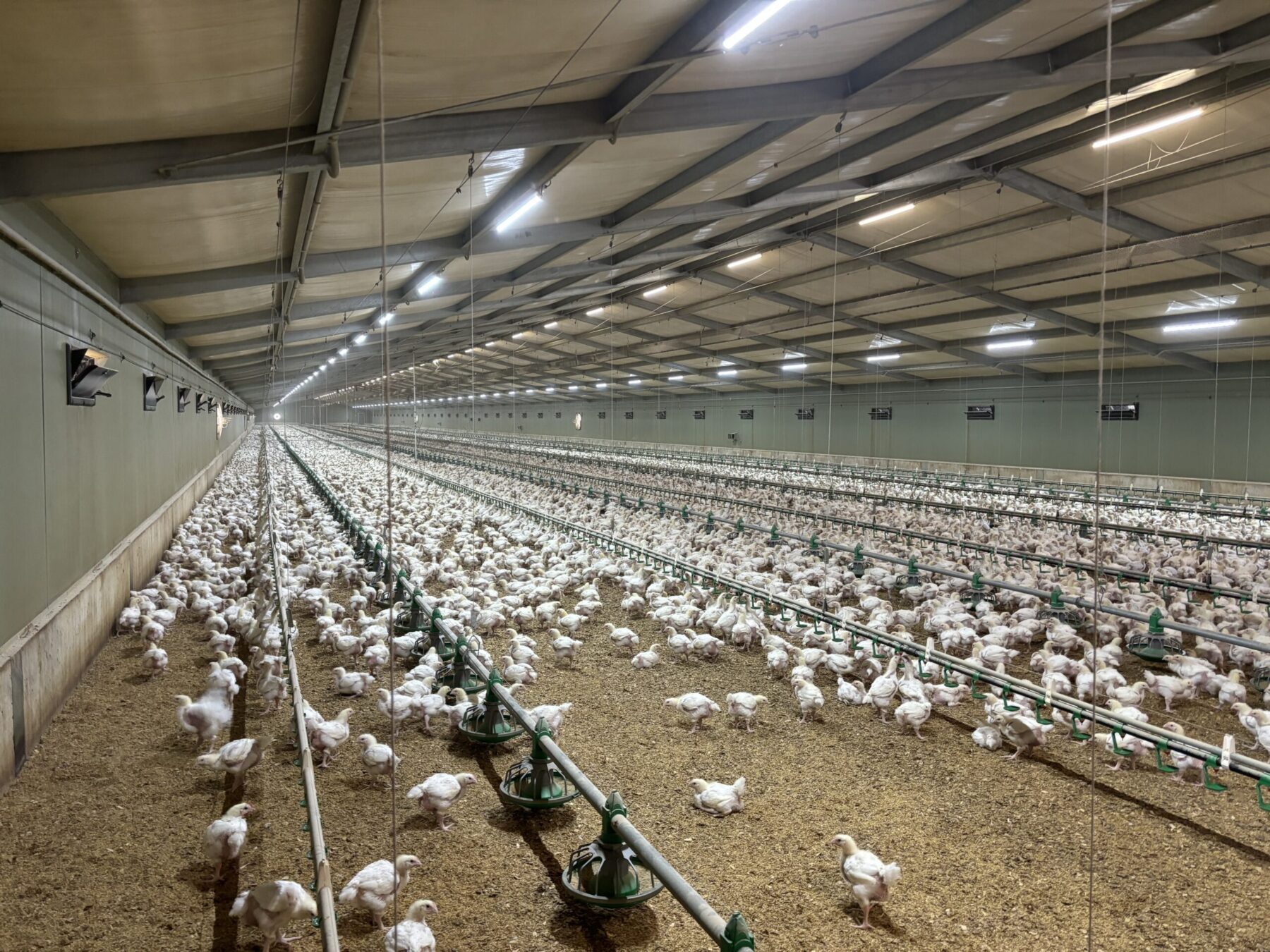
With surging investor interest in the child care sector, from both privates and institutions, a new report has detailed the key opportunity and risk locations in minute detail.
The ‘Child Care Demographics Report’ analyses over 1 million places nationally from 7,274 service providers and overlays the latest demographic and economic information such as population, child population, employment trends, school attendance and more across nearly 3,000 areas in the country.
The report from consulting web platform AreaSearch, which was founded by Chris Freeman the former research lead of the $52bn Charter Hall Group, Australia’s largest Child Care landlord, shows significant variations in relative supply trends across the nation.
Freeman said while you need to look at many factors to assess the demand supply balance properly, the primary metric is the ratio of children under 5 years old per place. On that basis, using the latest ACECQA data, we found a nationwide average of 2.7 children per LDC (Long Day Care) place, with the Capital Cities ranging from just 2.0 children per place in the ACT to 3.6 children per place in Perth.
“There are certainly differences between markets, in Canberra the employment numbers lead the nation so you would expect a higher requirement for childcare services, but we do believe Perth is a broad standout especially given its economic performance and the ‘critical mass’ challenge for some national operators, which opens up local opportunities,” Freeman said.
“Melbourne and Sydney are fairly similar in terms of broad demand and supply dynamics at 2.7 and 2.6 children per place respectively, but interestingly where they differ is on the average size of centres with Melbourne centres having an average of 89 children per centre whereas in Sydney there are only 55 kids per centre on average, which is largely down to local planning challenges in Sydney. “
While Government support for the sector clearly adds to tenancy security, it is not a panacea for guaranteed success according to Freeman and it is critical that landlords and operators do their demand and supply numbers properly before opening.
“There is a real balancing act between supporting the need for this critical piece of social infrastructure and ensuring tenants remain profitable and viable. Almost daily I walk past a major child care space that has sat vacant for over a year, the larger players are mindful of this and undertake rigorous analysis, it’s really something all sector entrants should be doing,” he said.
The sector’s demand from institutional investors is currently seeing a major test from the Allaf portfolio of 21 properties on exceptional lease covenants. This is likely to see a number of new institutional and high net worth investors looking to enter the sector given its scale and income security.
The report highlights material differences that are apparent between sectors within cities, with Baulkham Hills having more than double the relative supply seen across Blacktown in Sydney for example.
On the variation in supply levels across regions, AreaSearch Associate Ronan O’Carroll said, “When broken down at local levels, even in more the generously supplied Brisbane and Canberra markets, we see a number of areas where the ratio of children to child care places rises dramatically, while some even within the city fringes, are completely lacking in child care supply. “
“While this can be due to competition from neighbouring areas with higher levels of education and commercial activity, clear undersupply in certain suburbs such as Sydney’s Bondi Beach and Bronte, where underlying demand is high, suggest planning and hiring constraints are the chief roadblocks for investors and operators.“
O’Carroll added, that among other macro trends, a major factor in driving demand and performance within the sector over coming years will be population growth, and its eventual return to pre-pandemic levels.
“Applying the ABS’ lower-tier population forecasts, we estimate 12.5% growth over the coming decade. Assuming the current ratio of children to child care place is sufficient in satisfying demand, Australia will require approximately 74,000 additional LDC places (circa 1,050 centres) to maintain this ratio. ”
The key is, making sure the additional places go where they are required most, he said.
Click on the link below to download the AreaSearch Report .



